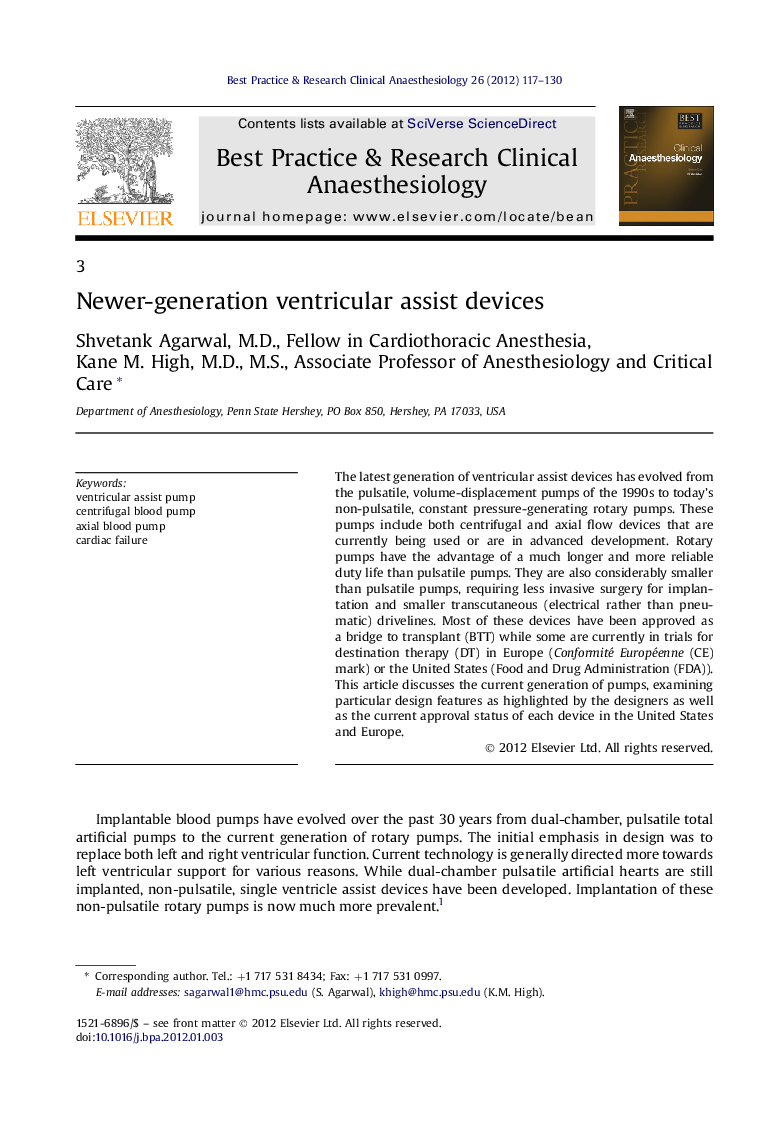| Article ID | Journal | Published Year | Pages | File Type |
|---|---|---|---|---|
| 2748463 | Best Practice & Research Clinical Anaesthesiology | 2012 | 14 Pages |
The latest generation of ventricular assist devices has evolved from the pulsatile, volume-displacement pumps of the 1990s to today's non-pulsatile, constant pressure-generating rotary pumps. These pumps include both centrifugal and axial flow devices that are currently being used or are in advanced development. Rotary pumps have the advantage of a much longer and more reliable duty life than pulsatile pumps. They are also considerably smaller than pulsatile pumps, requiring less invasive surgery for implantation and smaller transcutaneous (electrical rather than pneumatic) drivelines. Most of these devices have been approved as a bridge to transplant (BTT) while some are currently in trials for destination therapy (DT) in Europe (Conformité Européenne (CE) mark) or the United States (Food and Drug Administration (FDA)). This article discusses the current generation of pumps, examining particular design features as highlighted by the designers as well as the current approval status of each device in the United States and Europe.
